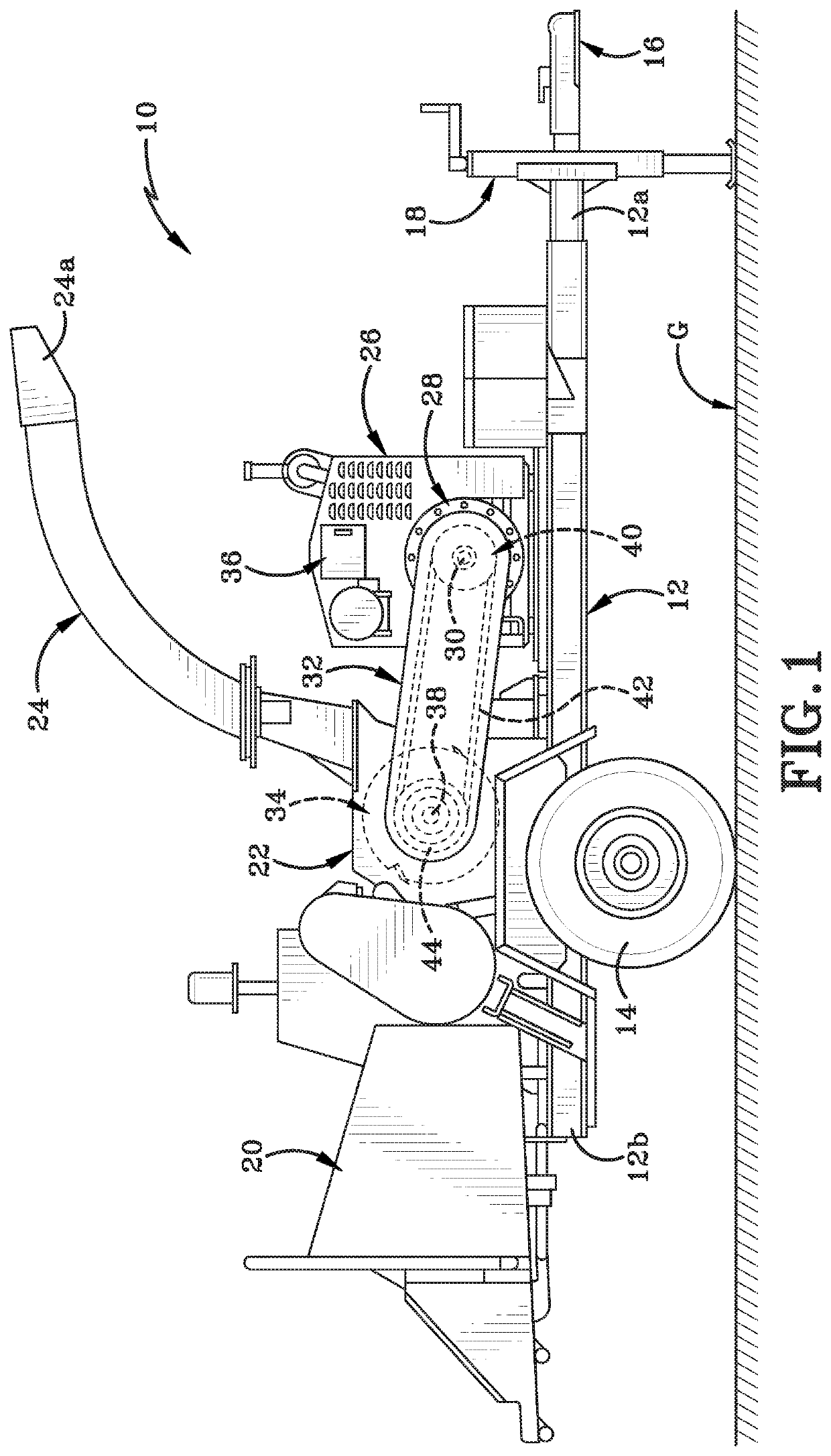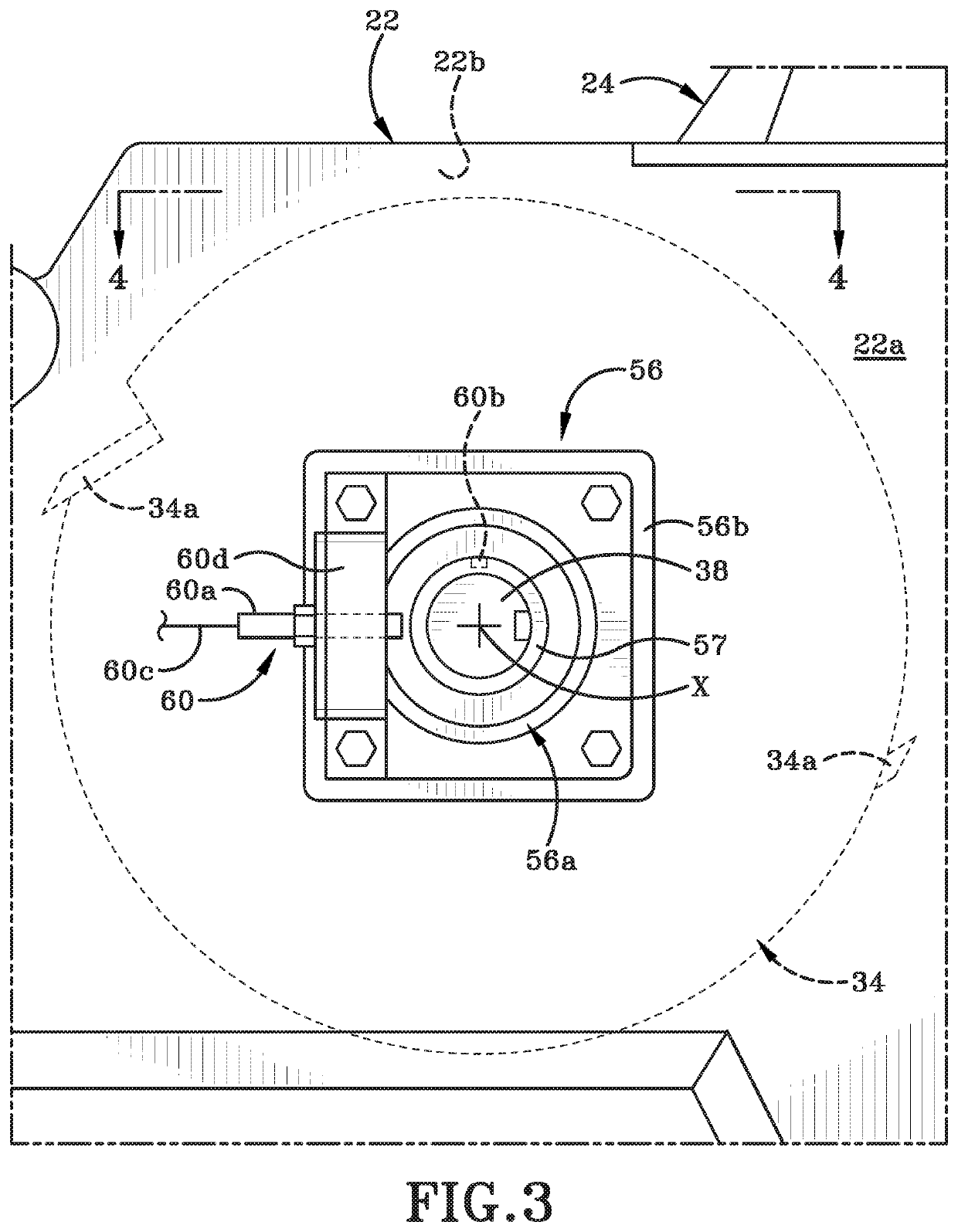Wood chipper with drum speed monitoring system and centrifugal clutch
a technology of drum speed monitoring and clutch, which is applied in the field of wood chippers, can solve the problems of affecting the rotational speed of the drum, thicker wood pieces such as tree trunks, and the difficulty of cutting blades on the rotating drum to process
- Summary
- Abstract
- Description
- Claims
- Application Information
AI Technical Summary
Benefits of technology
Problems solved by technology
Method used
Image
Examples
Embodiment Construction
[0031]Referring to FIGS. 1-6, there is shown an apparatus for reducing the size of pieces of wood such as tree trunks and tree limbs to wood chips. The apparatus or wood chipper is indicated herein by the reference number 10. Wood chipper 10 as illustrated herein is exemplary of an apparatus for chipping wood. Wood chipper 10 as illustrated as being configured to be able to be towed behind a vehicle. Furthermore, as illustrated, wood chipper 10 is of a size and configuration suitable for having wood materials fed into the same by hand or by a small piece of auxiliary equipment.
[0032]Wood chipper 10 includes a frame 12 upon which are mounted at least one pair of wheels 14 for moving the frame 12 across the ground “G”. A hitch assembly 16 and a landing gear 18 are also provided on frame 12. Hitch assembly 16 is provided on a front end 12a of frame 12 and enables frame 12 to be operatively engaged with a towing vehicle (not shown). Landing gear 18 is engaged with frame 12 rearwardly of...
PUM
 Login to View More
Login to View More Abstract
Description
Claims
Application Information
 Login to View More
Login to View More - R&D
- Intellectual Property
- Life Sciences
- Materials
- Tech Scout
- Unparalleled Data Quality
- Higher Quality Content
- 60% Fewer Hallucinations
Browse by: Latest US Patents, China's latest patents, Technical Efficacy Thesaurus, Application Domain, Technology Topic, Popular Technical Reports.
© 2025 PatSnap. All rights reserved.Legal|Privacy policy|Modern Slavery Act Transparency Statement|Sitemap|About US| Contact US: help@patsnap.com



